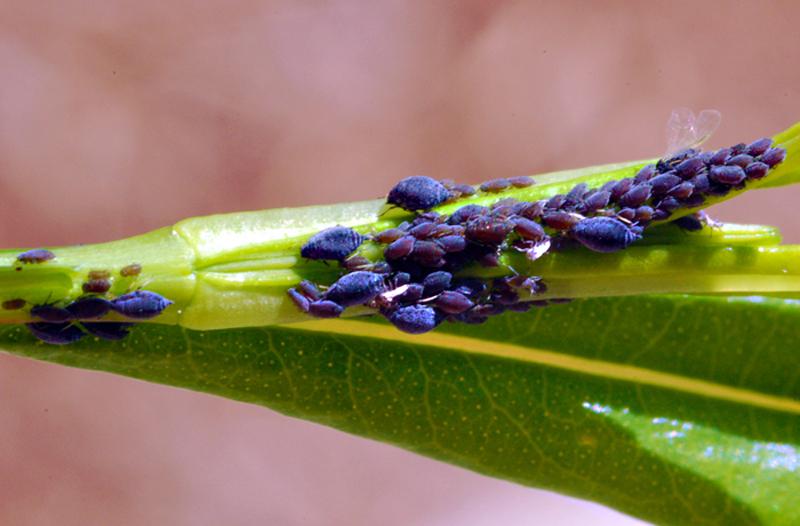Homecoming. Truman. Tiger Stripe ice cream. Now there’s yet another MU claim to fame: its own insect species.
Aphis mizzou is a close relative of Aphis hyperici, which was already known to be at MU. Ben Puttler — assistant professor emeritus of plant sciences at the College of Agriculture, Food and Natural Resources — discovered Aphis mizzou while studying parasitic wasps on Aphis hyperici.
“There was an innate feeling that I had found something different,” Puttler said.
Small black specks dotted the inside of a small vial in his office. Puttler held out the vial, which contained samples of Aphis mizzou.
“They’re very small,” Puttler said. “You really have to look.”
Puttler first found what would later be known as Aphis mizzou in 2005. He sent samples to Doris Lagos, a Ph.D. candidate in the entomology department at the University of Illinois, to see if it was a new species.
“It’s very similar to another species in Missouri,” Lagos said of Aphis mizzou. “(Puttler) said he saw some biological differences. I decided to pursue (the research) and do more molecular work.”
What Lagos found was a new species.
Aphis mizzou is accepted as a new species because of differences in antennae and the abdomen, as well as having a white wax coating, according to the academic paper published by Puttler, Lagos, David Voegtlin and Rosanna Giordano.
Because it was discovered at MU, Puttler said he decided there wasn’t a much better name than MU itself.
“Insects are either named after the plant it’s found on, the city it’s found in or a Latin name describing it,” Puttler said. “There’s no other aphid named after Mizzou. It seemed to make sense.”
It is completely possible for Aphis mizzou to be found in other places besides MU, Lagos said.
“Species of the genus Aphis undergoes rapid radiation and adapt well,” Lagos said. “It’s possible that they are in other areas – we just haven’t identified them yet.”
Puttler said he doesn’t doubt Aphis mizzou could be found other places.
“Sometimes you have to be in the right place at the right time,” Puttler said. “But it’s just a matter of looking.”
More than 4,000 species of aphids have been described, 250 of which are pests of crops and ornamental plants, according to an Encyclopedia Britannica article. They are sap-sucking, soft-bodied insects, whose primary functions are to eat and excrete honeydew.
Puttler said as far as he knows, Aphis mizzou is harmless.
“For now,” Puttler said, chuckling. “You never know.”








